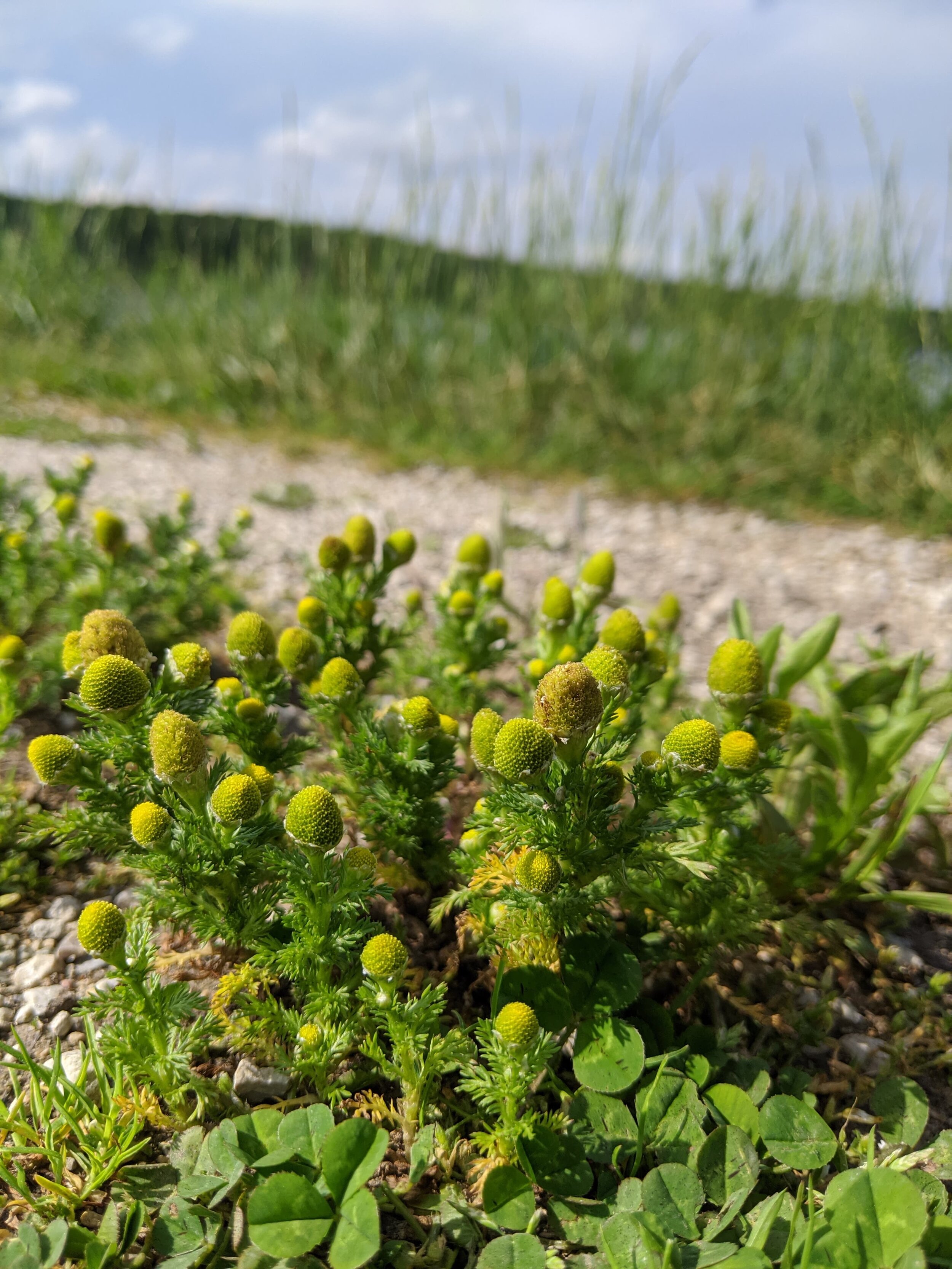For me, an obsession with everything botanical came later on in my academic career. I never paid too much attention to plants as a kid. To be brutally honest, I used to find plants boring. I was too busy preoccupying myself with reptiles, amphibians, and fish. However, if there was ever a plant that was an icon of my care-free childhood existence, it would have to be the humble yet hardy pineappleweed, Matricaria discoidea.
Tearing around on playgrounds for most of the summer months, this little member of the aster family was one of the few species that could handle the endless energy of hundreds of rampaging children and thus was one of the only plants I ever paid much attention to. Still, is wasn’t until much later that I took the time to figure out its identity and natural history.
Pineappleweed is native to parts of northeast Asia and northwestern North America. There are some out there who believe this species may have been brought to North America by paleolithic peoples as a food plant. While this remains to be substantiated, there is no doubt that this is one adaptable species. Now nearly global in its distribution, pineappleweed thrives in some of the harshest habitats imaginable for such a small plant. Its tough stem can handle a lot of foot traffic, making it a common sight along roadsides, city walkways, and of course, playgrounds.
Though at first glance it doesn’t look like it, pineappleweed is a member of the daisy family (Asteraceae). It simply lacks the showy ray florets produced by those of its close cousins. Speaking of cousins, pineappleweed is actually a close relative of chamomile (Matricaria chamomilla). What looks like a single yellow flower is actually a disk made up of many individual flowers densely packed into a dome. The blooms are attractive to tiny syphrid flies but it is not quite known if they are effective pollinators or not. Pineappleweed is also an annual and each disk of flowers can produce thousands of sticky little seeds. This is how this species gets around. Its seeds stick to everything from animal fur to shoes and even car tires. Pineappleweed is yet another species that has benefited from the wanton globalization that humans have enacted upon the world. Keep your eye out for it. It isn’t hard to find and it is certainly a plant worthy of closer inspection.


